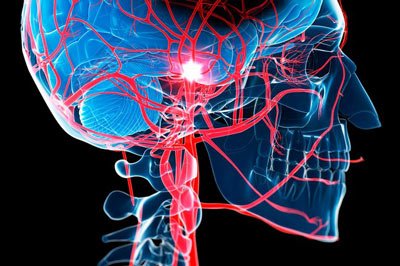Migraines are often considered the worst of all headaches. They can last anywhere from a few hours to days, while severely limiting your daily activities. If you suffer from migraine headaches, you may have tried a number of solutions to reduce or at least limit your pain. The doctors at pain management in New York City are migraine specialists. They can help you find treatments that target your specific symptoms, as well as identify the triggers you need to avoid.
You may be one of the fortunate ones who get a warning sign when a migraine headache is imminent. Some people see an aura or visual indications, like blurriness or blind spots. Others feel a tingling sensation that can run up and down one side of their face or leg. Others still have reported difficulty speaking just prior to the appearance of the pain.
Severe throbbing pain, often on only one side of your head — along with sensitivity to light, nausea and vomiting — all contribute to making these headaches some of the most debilitating. Tell your pain doctor about all your symptoms when you seek migraine relief at one of the best pain management clinics in Manhattan: NYC physical therapy and pain center.
Symptoms of Migraine Headaches
Many reports that their migraines began in childhood or adolescence. It isn’t unusual for migraines to appear in early adulthood, as well. Although not every migraine follows a similar pattern, top pain relief doctors indicate that there are four predictable stages that most migraines follow:
- The prodrome stage. One to two days before the onset of a migraine, the prodrome stage arrives. Symptoms include food cravings, increased thirst, constipation, mood swings, neck stiffness, and frequent yawning.
- The aura stage. You may experience visual disturbances like auras just before or during a migraine. Some individuals also report loss of vision, weakness or numbness on one side, a pins-and-needles sensation in one arm or leg, uncontrollable jerking of limbs or hearing noises or music where there is none.
- The attack stage. A migraine can last anywhere from four to 72 hours. Symptoms include pulsing pain on one side of your head, nausea and vomiting, as well as sensitivity to lights, smells and sounds that cause these sensations to become more painful.
- The postdrome stage. After experiencing the pain of a migraine, you may feel exhausted and drained. Alternatively, you may feel a sense of euphoria, most likely due to cessation of the pain. Exercise caution for the first day or so after your attack, as sudden movements of your head can bring a return of the pain.

You may have a history of headaches that you’ve never chosen to find treatment for, but be aware of the symptoms that could signal an emergency. If you experience an unusual, severe or new headache symptom after the age of 50, especially following a head injury or accompanied by a fever and stiff neck, seek immediate medical assistance. Emergency appointments are available at Pain Management NYC.
Causes of Migraines
Heredity and the environment factor into the development of migraines. A brain chemical called serotonin that regulates pain in the nervous system may be the cause. While research continues, your NYC pain management doctor stays on top of the latest findings, including the dramatic results that come from Botox for migraines applications.
There are certain triggers that many people with migraines seem to share, including:
- Female hormonal changes. When estrogen levels fluctuate during menses, pregnancy and menopause, it can trigger migraines. Birth control pills mitigate the headaches for some.
- Changes in sleep patterns. Jet lag, too much sleep or too little sleep sometimes precedes migraines.
- Job-related and personal stressors are triggers for migraine sufferers.
- Beverages. Drinks that contain caffeine or alcohol can lead to migraines. Wine can be an especially strong trigger.
- Activity. Physical activity, including the intensity of sex, leads to migraines in some cases.
- Senses. Stimuli like loud sounds, bright lights and strong smells can act as triggers.
- Food. Skipping meals is a trigger for many people, as are certain foods — especially salty, processed items and aged cheese.
- Additives. Foods that contain monosodium glutamate (MSG) or the sweetener aspartame have been known to be strong migraine triggers.
- Medication overuse. Taking over-the-counter pain relievers that target migraines for more than 15 days a month can lead to more headaches once your body grows accustomed to the medicine.
Professional Migraine Headache Treatment
Diagnosis begins with a thorough medical history, because family history seems to play a role in migraine headaches. Imaging test are used to rule out underlying conditions. Treatment options depend on:
- The frequency and severity of your discomfort
- Whether you have accompanying nausea and vomiting
- What you’ve done to treat symptoms in the past
- Other medical conditions you have
Your treatment may include strong pain medication. The most common side effects for these medications is a rebound effect. They control your symptoms for a limited time before your symptoms return, sometimes stronger. Careful monitoring by your doctor helps prevent these reactions. Your migraine headache treatment may involve:
- Prescription pain relief medication
- Preventive medications including Botox for migraines, blood pressure-lowering meds, anti-seizure drugs, anti-depressants, and injections that contain calcitonin gene-related peptide monoclonal antibodies
Preventative Homecare Instructions
Home treatments that complement your medications are essential for effective relief. Fix up a quiet, dark room, where you can go when needed. Cover your eyes with a cool cloth or wrap an ice pack around the back of your neck. The cold helps numb the pain. Other effective treatments include:
- Ensure you get a proper amount of rest
- Get regular exercise to keep your muscles loose and strong — exercise also provides stress relief
- Employ relaxation techniques such as meditation, yoga or biofeedback
- Drink a sufficient amount of fluids every day so you don’t become dehydrated
When you’re ready to try effective migraine treatments at a top pain clinic in Manhattan, contact Pain Management NYC to schedule your first consultation. You have nothing to lose but your pain.

Leon Reyfman, MD, is a top-rated, best-in-class interventional pain management doctor. He is a nationally recognized pain relief specialist and is among the top pain care doctors in New York City and the country. He is an award-winning expert and contributor to prominent media outlets.
Dr. Leon Reyfman has been recognized for his thoughtful, thorough, modern approach to treating chronic pain. He has been named a “top pain management doctor in New York” and one of “America’s Top Doctors™” for advanced sports injury treatments. Among other accolades, he was voted by peers as a “Castle Connolly Top Doctors™” and “New York Super Doctors™”. Dr. Leon Reyfman was a part of the medical team at the 2016 Summer Olympic Games in Rio de Janeiro, Brazil.
